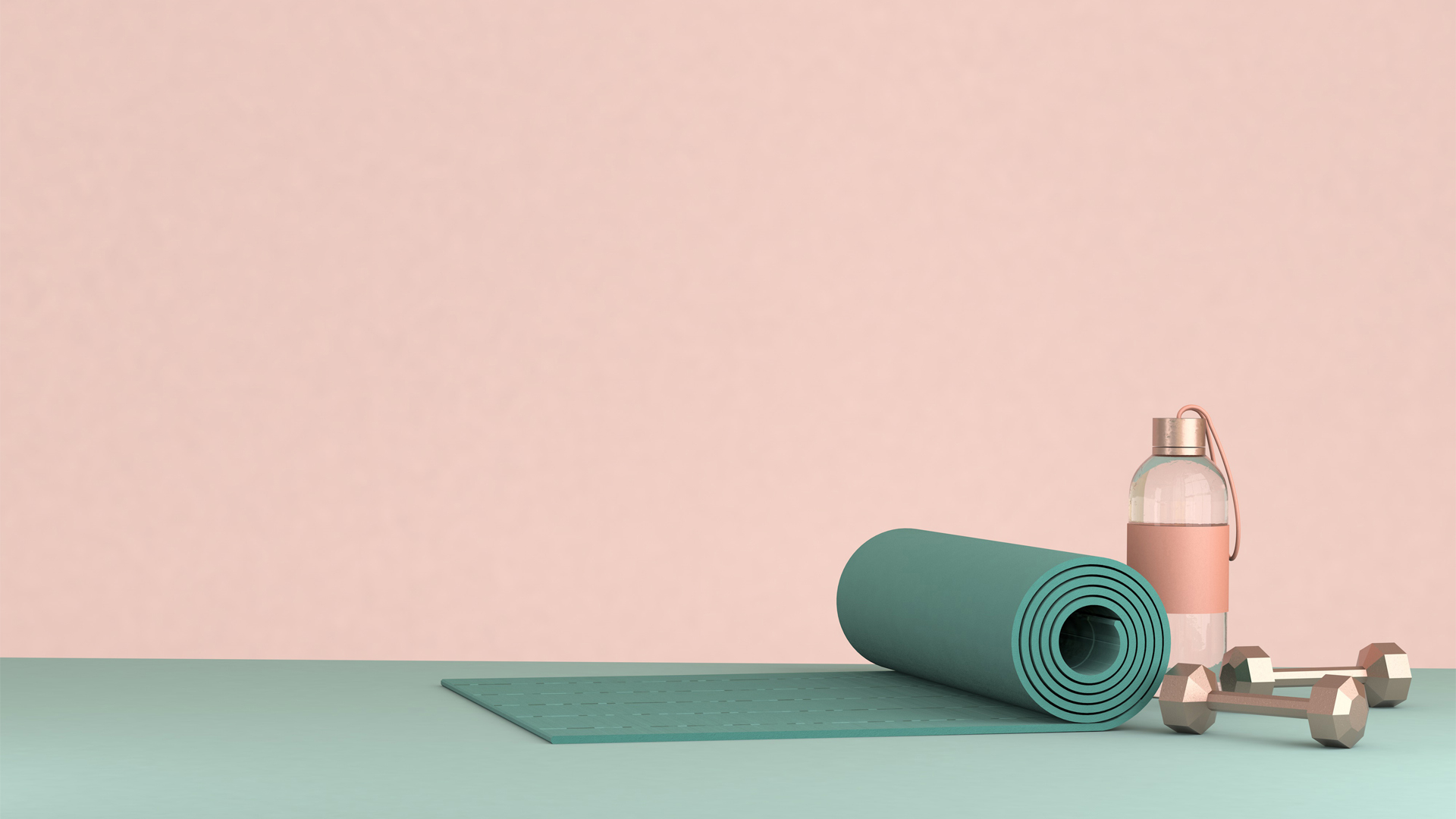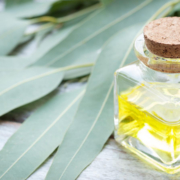The 5 Best Exercises To Do When Recovering From Illness
The 5 Best Exercises To Do When Recovering From Illness
Congrats. You’re on the road to recovery. Your injury or illness is beginning to fade into the rearview mirror. You’re salivating just thinking about tasting the salty beads of sweat dripping from your forehead when you finally get back to the gym. Maybe you’ve got your credit card in hand, about to re-up for a dozen Crossfit sessions. Or maybe you’ll score your first post-recovery endorphin rush training for your next marathon.
If you’re like most over-achieving Americans, you measure your wellness by how fit you are. How many burpees, clean and jerks, and Turkish get-ups can you do in one minute? Are you trimming seconds off your 10-mile pace chart?
To most fitness-centric folks, these are the true measures of wellness. And the sooner you can get back to your training routine, the happier you’ll be.
But maybe this is the wrong approach. Especially if you’re battling a chronic injury or illness. Maybe it’s a sign that calls for a new wellness paradigm. The fact is that some people are addicted to exertion. And when it comes to the best exercises for recovery, burning the candles at both ends is a recipe for becoming ill or injured again.
So let’s redefine exercise. Instead of getting back in the saddle by working out, focus on achieving optimal wellness by working in. Sure, your personal best squat or bench press will be in jeopardy of never being bested. But if you have, say, a hernia, is it really smart to place 500 pounds on your back?
Working Out vs. Working In
The 5 best exercises for recovery place emphasis on building energy internally rather than grunting full force. Now, it may seem counterintuitive that a slow-moving exercise like Tai Chi can make you fit. But no doubt, you’ve seen people in their 90s moving with fluid grace, pain-free doing Tai Chi. Isn’t that what you want to be like in your advanced years?
And just because the best recovery exercises such as Tai Chi may seem reserved for the geriatric set, it doesn’t mean that your strength or energy will suffer.
In fact, the exercises described below will yield more energy than you’re exerting. In other words, you’ll benefit from a net gain in energy. Oftentimes, when you’re recovering from an illness or injury, getting back quickly into HIIT (high-intensity interval training) or endurance training results in a net loss.
In other words, intense exercise may improve your strength and cardiovascular fitness. But it does so at the expense of taxing your stress hormones to the max. Injuries and illnesses are already major stressors to the body. If you want a quick, fully recovery, why add more stress to your body? Stress is stress. Your body does not distinguish financial or emotional stress from physical stress.
So without further ado, here are the 5 best exercises for recovery…
Visualization & Metta Meditation
In order to enjoy a full road to recovery, you need to first coach not your physique back into shape but rather your mind. This is especially true if you’re still experiencing symptoms, be it pain or fatigue, etc.
When you’re sick or injured, what’s going to get you back to optimal health is visualizing perfect health. In fact, guided imagery and visualization are spiritual tools many elite athletes do to stay at the top of their game.
Visualization exercises, research studies suggest, may also speed up the healing process.
To put visualization into practice, picture how you want to feel. Don’t just utter a statement in your head. Instead, feel it viscerally. Try repeating something like this: “I live my life pain-free with 100% mobility and experience profound joy with every step I take.”
Here’s a YouTube video of a visualization for illness recovery, hosted by a healing professional.
And if you’re still feeling down in the dumps about not being at the top of your game, try “Metta Meditation.”
This centuries-old Buddhist practice is also known as “loving-kindness” meditation. Metta meditation will help you bounce back to your former tip-top-shape self by cultivating your attitude of gratitude.
Because at the end of the day what you appreciate, appreciates. In other words, be grateful for what you have, including the little things in life.
If you’re stuck in the mentality of, “Before my illness I ran 10 marathons so I should still be able to run a marathon,” then you’re setting yourself up for more illness. Especially if you train for it before you’re physically ready.
But compassion-based interventions such as loving-kindness meditation can help you recover more quickly. In fact, research studies show it can be effective for treating chronic pain.
Tai Chi & Qi Gong
So you think Tai Chi is for wimps? The origins of Tai Chi are actually rooted in good ol’ fashioned butt-whooping. Initially developed for self-defense, Tai Chi is now recognized as one of the best exercises for recovery, reducing anxiety, and for stress management.
A 2016 meta-analysis of more than 500 trials concluded that there’s “good evidence” for Tai Chi aiding in cardiac and stroke rehabilitation as well as lessening the symptoms of things like depression and dementia.
Qi Gong is a graceful moving meditation that’s very similar to Tai Chi. Like anything else, it’s fairly easy to find intro videos for Tai Chi and Qi Gong. Both of these exercises cultivate internal energy. They build up your energy reserves rather than deplete them like high-intensity exercise has the propensity to do.
Buteyko Breathwork
Thanks to the Wim Hof method, deep breathing (and ice baths) have become popular with the CrossFit set. But the Wim Hof breathing method might not be one of the best exercises for recovery. You see, we’re already a nation of stressed-out mouth breathers. Do we really need to practice more deep breathing through our mouths? (Wim Hof inhalations are more like sucking in through a straw in your mouth but you get the point.)
Could it be that the most stress-reducing form of breathing involves taking very light breaths through the nose? This is the theory behind the Buteyko breathwork method. Named for Russian medical researcher, Dr. Konstantin Buteyko, the goal of the Buteyko method is to restore homeostasis to the body by normalizing breathing.
Counterintuitively, the theory of the Buteyko method is that oxygen deficiency is not caused by lack of oxygen, but by lack of carbon dioxide. In other words, we’ve been led to believe that we need to breathe more, not less. But the opposite is true. If we breathe too much, we actually get less oxygen. That’s why if you go too gung-ho with the Wim Hof Method you can pass out or at the very least feel lightheaded.
It’s not uncommon for very stressed-out individuals to breathe up to 25 breaths a minute—through the mouth. How often should we breathe? No more than 8-12 breaths a minute, with both inhalation and exhalation through the nose.
This Buteyko Breathing Guide PDF download will teach you the basics.
Yoga
Of course yoga had to make this list of best exercises for recovery. But not all yoga is created equal. If you’re recovering from injury or illness or still struggling in the chronic phase, the last type of yoga you want to do is a vigorous style like ashtanga.
The best yoga for recovery helps cultivate the interconnectedness between your mind and body. In other words, yoga should help you become like a tracker. But instead of learning to read mountain lion tracks, you become an expert at reading your body’s internal signals.
Slower, more gentle forms of yoga, like restorative or yin yoga, are better for exercise recovery because they help you form a deep relationship with your body. This concept is called interoception, which, not to be confused with an interception in a football game, is basically a scientific term for listening to your body, or to put it more simply, mindfulness.
If you’re still not feeling 100%, don’t fight it. Chugging a can of Jolt cola, chased by a triple espresso just to make it through a workout won’t get you back on the road to recovery. Relying on caffeine might help you temporarily power through a workout. But what is the long-term cost-benefit analysis?
Best Exercises For Recovery To Get The Endorphins Going
When you’re almost fully recovered, you can start focusing on building back up your endurance. Some of the best post-recovery activities for your cardiovascular system also benefit your mental and spiritual well-being.
Take walking or hiking for instance. Not only do they get the heart pumping and blood flowing, but they also expose you to negative ions—which is a positive thing. Research suggests that when we immerse ourselves in nature, the negative ions in the air can reduce the severity of depression, lower psychological stress and anxiety, and enhance well-being.
It’s no wonder many people enjoy long walks on the beach. There’s something in the air that makes us feel as if we just took a happy pill when we take in the ocean breezes. But it’s not just the bucolic setting and majesty of the waves crashing. And that something is negative ions.
But even if you’re a landlubber, you can still benefit from negative ions while walking or hiking—or dancing, skipping, hopping, etc.
Negative ions are waiting to engulf you with healing energy in the woods, or a forest or even on a municipal trail. Plants, trees, grass and mountains are abundant in negative ions.
Disconnecting from technology and reconnecting with nature after an injury or illness can be therapeutic. In fact, spending too much time on screens and not enough time in nature is why the Japanese invented the concept of “forest bathing” or shinrin-yoku in the early 1980s.
In one research study, forest bathing was shown to lower concentrations of the stress hormone cortisol; lower pulse rate, lower blood pressure, increase parasympathetic nerve activity (the body’s rest and digest branch of the nervous system), and lower sympathetic nerve activity (the body’s fight or flight stress response).
More Benefits of Spending Time Outdoors For Recovery
In addition, research shows that spending time in a natural setting like a forest can enhance your recovery and boost your immune system.
For example, trees emit compounds called phytoncides that provide the forest with a stress-lowering aroma. In other words, phytoncides are the Earth’s natural air freshener. More than having a pleasing, calming scent, phytoncides can increase human natural killer (NK) cell activity, which helps us fight viruses. Going for a brisk 15-minute walk in the woods is all it takes to get a dose of phytoncides.
Moreover, when you spend time outside during the warmer months with some skin exposed directly to the sun, your body synthesizes vitamin D. In addition to supporting the immune system, vitamin D is involved in cardiovascular health.
Exercising outdoors kills three birds with one stone. It can improve your endurance while you’re still recovering, it can boost your mental (and spiritual) well-being, and it can support your immune system.

Best Exercises For Recovery: Conclusion
Illness and injury take a toll on the body. Intense exercise can create further stress. The key to a speedy recovery and optimal wellness is a goldilocks zone of movement. Not too little where the blood flow becomes stagnant, like gridlock on an LA freeway. In Traditional Chinese medicine, this condition is called blood stasis.
But intense exercise can also clog your cardiovascular freeway. It’s like you’re cruising in traffic, everybody is racing at 80 mph but all of a sudden traffic comes to a standstill. The traditional Chinese medicine concept of blood stagnation describes this phenomenon. And with blood stagnation, injuries and illnesses are more difficult to heal.
So rather than burn the candle at both ends with intense exercise, extend your wick. When it comes to the best exercises for recovery, work in instead of out. And then when you feel like your body is ready, you can exercise more vigorously. And if you want to enhance your body, mind and spirit, start taking your workouts outdoors.
Disclaimer: The statements made in this article have not been evaluated by the Food and Drug Administration. Any products or treatments mentioned are not intended to diagnose, treat, cure, or prevent any disease. Please consult a licensed medical practitioner for medical advice.
At Innovative Medicine, we believe in transparency. We want you to know that we may participate in affiliate advertising programs pertaining to products mentioned herein.
See how we can help you restore complete health of body, mind & spirit.
Join our mailing list and receive exclusive offers + information!







Leave a Reply
Want to join the discussion?Feel free to contribute!